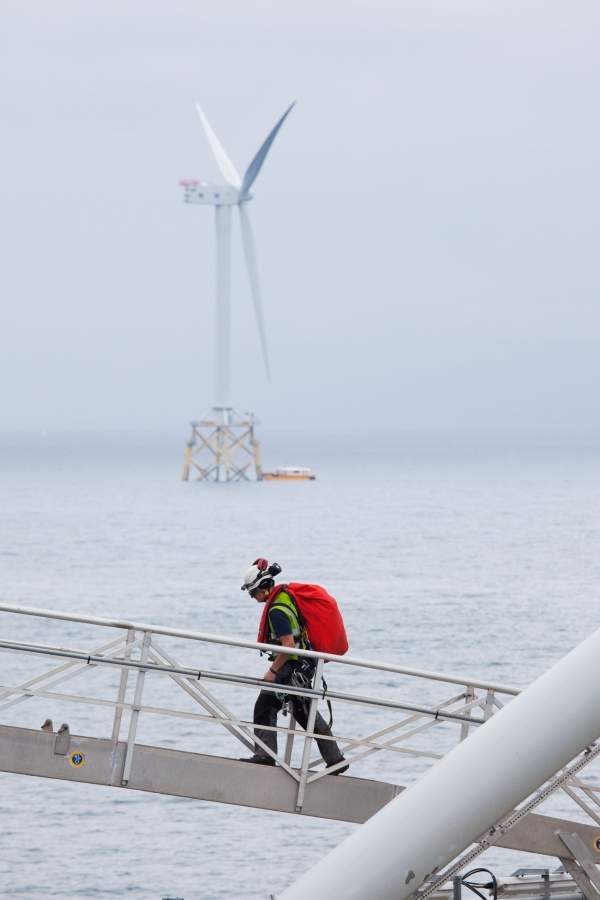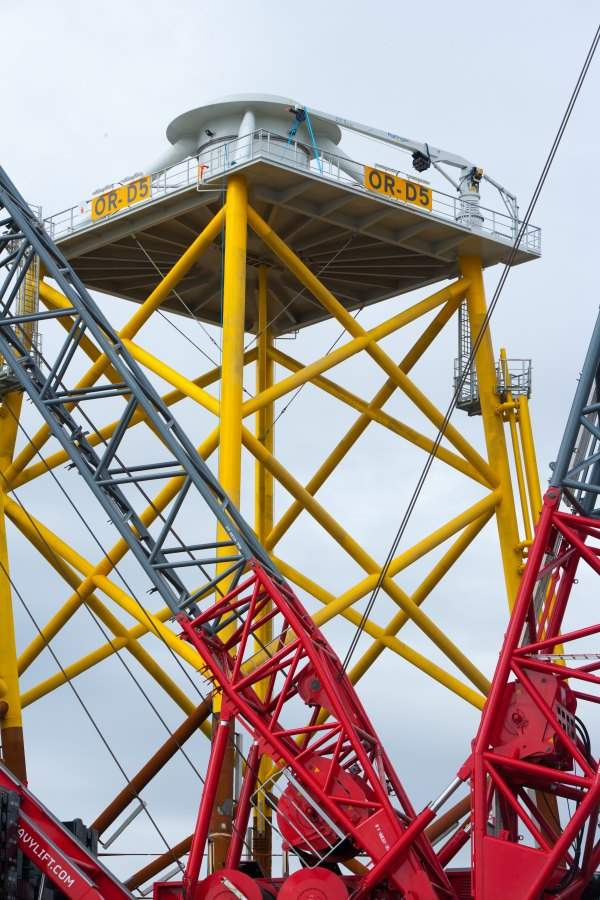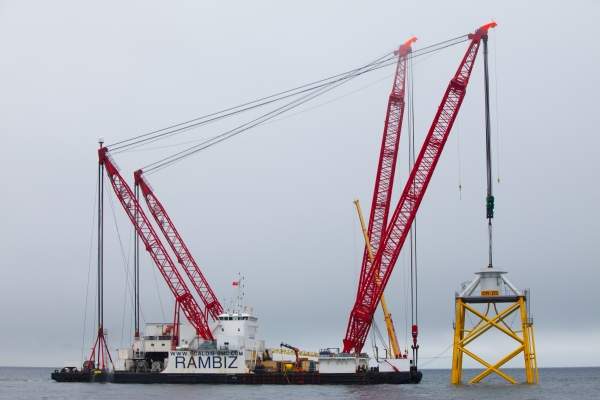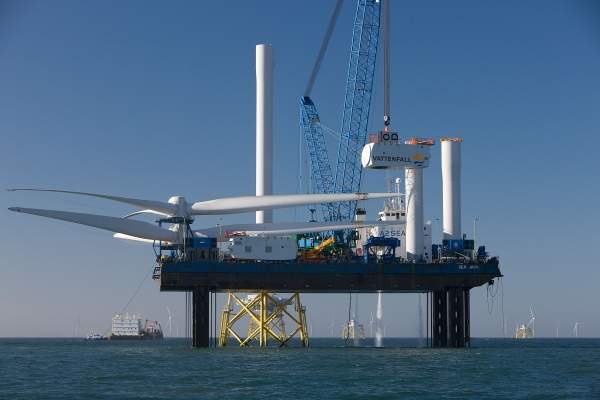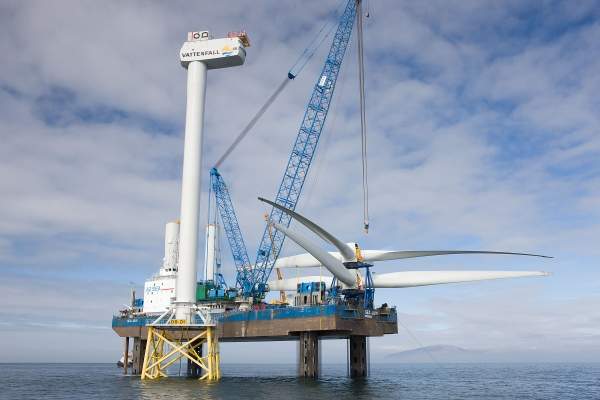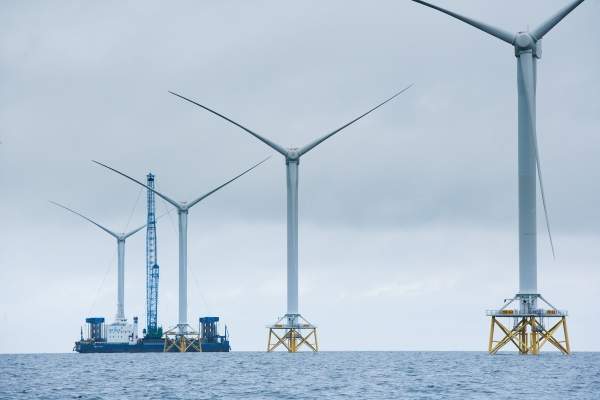Ormonde offshore wind farm was developed in the Irish Sea, offshore of the UK, on an 8.7km² site. Constructed by Vattenfall, the 150MW wind farm was completed in August 2011 and officially inaugurated in February 2012. It has the capacity to generate 500GWh of green electricity annually, which is enough to power 100,000 homes in the UK.
Vattenfall invested €552m in the project. Ormonde is the third project built by Vattenfall in the UK. Vattenfall had built the Thanet and Kentish Flats wind farms prior to Ormonde.
Development of the wind farm project
The Ormonde project was originally proposed in 2002 by Eclipse as a hybrid wind and natural gas operation. In 2008, Vattenfall acquired Eclipse and found that the gas operation was not feasible. The site was therefore decided to be developed as a wind-only project.
Wind turbine and substation details
The Ormonde wind farm consists of 30 5MW wind turbines supplied by REpower. The turbines weigh 661t, with a hub height of 90m and a rotor diameter of 126m. They have been erected on 500t four-legged steel jackets installed in 21m of water. Each turbine is located 560m apart.
A 132kV substation was constructed at Heysham to transfer the electricity generated by the wind farm to the national grid. The onshore section of the project also includes an operations and maintenance facility at Barrow Harbour.
Construction of the Ormonde offshore wind farm
Construction works for the project included both offshore and onshore development. Onshore works started in November 2009 with the construction of the substation at Heysham.
In January 2010, works commenced to lay the export cable from the wind farm to the Heysham substation. The cable weighs 3,500t and is made of copper, steel wires and polyethylene. Installation of the cable was completed in April 2010.
The offshore works started in May 2010. The first wind turbine was installed in March 2011 and the last in August 2011. Various components of the turbine including the rotor, nacelle and tower sections were fabricated at the turbine supplier REpower System’s facility in Germany.
The components were then transported and assembled in Belfast, from where they were transported to the site onboard A2Sea’s installation vessel the SeaJack.
Ormonde is the first offshore wind farm to use steel jackets for the turbine and substation foundations. The jackets were transported offshore on cargo barges and secured onto the seabed by inserting the four legs into pre-driven piles. The legs and pre-driven piles were connected by injecting a cement grout into the annulus around the pile.
Grid network connected to the Heysham substation
Electricity generated by the wind farm is transferred onshore through a 42km long, 132kV export cable. Cable landfall is located at Half Moon Bay about 2,800m away from the Heysham substation. Buried underground cables transfer the electricity from Half Moon Bay to the Heysham substation, from where the power is further transferred to the national grid.
In July 2012, Vattenfall transferred ownership of the export cable to Transmission Capital Partners (TCP) under a €103.9m deal. The transfer was carried out following an assessment by regulator Ofgem. TCP will own and operate the cable and substations for 20 years.
Contractors involved in Vattenfall’s Ormonde offshore wind farm
ODE was contracted to provide the front-end engineering design (FEED) and detailed engineering design services for the offshore transformer platform of the project.
Prysmian was awarded a €27m contract to supply submarine power cable connections for the wind farm. The scope of the contract included the supply of a 33kV inter-array cable to connect the wind turbines and a 132kV export cable to connect the wind farm to the substation.
Related project
Burbo Offshore Wind Farm, United Kingdom
Twenty five 3.6MW wind turbines have been installed at the 90MW Burbo Offshore Wind Farm in Liverpool Bay, Wales.
Infield cables and the export cable were installed by Visser & Smit Marine Contracting.
Harland & Wolff was contracted to provide logistics and assembly services for the project. Burntisland Fabrications supplied the steel jacket foundations. Scaldis Salvage & Marine Contractor and GeoSea installed the four-legged steel jackets for the wind turbines. Scaldis Salvage & Marine Contractor’s heavy lift vessel, Rambiz, was used for carrying out the installation.
FoundOcean carried out grouting works for the project using the Swiber Else-Marie vessel. The Heysham substation was designed and built by Areva. Roxtec installed seals to protect cables of the substation.
REpower contracted SAL to transport the components of the turbines from its manufacturing facility in Germany to Belfast.
Camberley Engineers supplied SCADA systems for the turbine generators and substation of the wind farm.
Other contractors involved in the project include Neil Martin Group, Tideland Signal, Askam Construction, Agrilek and R G Parkins.

